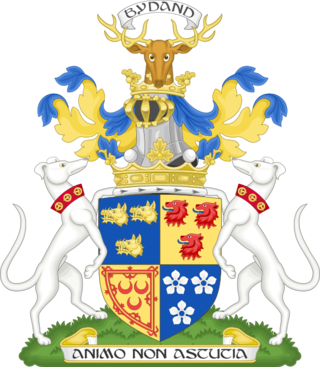
Marquess of Huntly is a title in the Peerage of Scotland that was created on 17 April 1599 for George Gordon, 6th Earl of Huntly. It is the oldest existing marquessate in Scotland, and the second-oldest in the British Isles; only the English marquessate of Winchester is older. The Marquess holds the following subsidiary titles: Lord Gordon of Strathaven and Glenlivet and Earl of Aboyne, and Baron Meldrum, of Morven in the County of Aberdeen.

Marquess of Northampton is a title that has been created twice, firstly in the Peerage of England (1547), then secondly in the Peerage of the United Kingdom (1812). The current holder of this title is Spencer Compton, 7th Marquess of Northampton.

Henry Howard, 6th Duke of Norfolk, was an English nobleman and politician. He was the second son of Henry Howard, 22nd Earl of Arundel, and Lady Elizabeth Stuart. He succeeded his brother Thomas Howard, 5th Duke of Norfolk, after Thomas's death in 1677.

Earl of Peterborough was a title in the Peerage of England. It was created in 1628 for John Mordaunt, 5th Baron Mordaunt. He was succeeded by his eldest son, Henry, the second Earl. He was a soldier and courtier. Lord Peterborough had two daughters but no sons. He was succeeded in the barony of Mordaunt by his daughter, Mary, 7th Baroness. The earldom was passed on to his nephew, Charles Mordaunt, 1st Earl of Monmouth, who became the third Earl. He was a prominent soldier and politician. In 1705 he also succeeded his cousin Mary in the barony of Mordaunt. His eldest son John Mordaunt, Viscount Mordaunt, predeceased him, and Lord Peterborough was consequently succeeded by his grandson, Charles, the fourth Earl. The barony of Mordaunt, the viscountcy of Mordaunt and the earldoms of Peterborough and Monmouth, became extinct on the death of the latter's son, the fifth Earl, in 1814. The barony of Mordaunt was passed on to his half-sister, Lady Mary Anastasia Grace Mordaunt.

General Alexander Gordon, 2nd Duke of Gordon, styled Earl of Enzie until 1684 and the Marquess of Huntly from 1684 to 1716, was a Scottish Jacobite peer.

Charles Mordaunt, 3rd Earl of Peterborough and 1st Earl of Monmouth, was an English Army officer, Whig politician and peer. He was the son of John Mordaunt, 1st Viscount Mordaunt, and his wife Elizabeth, the daughter and sole heiress of Thomas Carey, the second son of Robert Carey, 1st Earl of Monmouth. Mordaunt's father, John Mordaunt, was created Viscount Mordaunt of Avalon and Baron Mordaunt of Reigate, Surrey, in 1659.
The title Baron Mordaunt was created in 1529 for Sir John Mordaunt. The fifth baron was created Earl of Peterborough in 1628 and the title then passed to his son, the second earl, in 1644. On his death in 1697, the earldom was inherited by his nephew, Charles and the barony was inherited by his only child, Mary, the estranged wife of the 7th Duke of Norfolk. When she died childless in 1705, the barony was also inherited by Charles, who had also been created Earl of Monmouth.
William George Cavendish, 2nd Baron Chesham was a British Liberal politician.
Henry Nevill, de facto 9th Baron Bergavenny was an English iron founder, soldier and politician who sat in the House of Commons at various times between 1601 and 1622 when he inherited the Baron Bergavenny peerage.

John Mordaunt, 1st Viscount Mordaunt was an English military officer and peer.
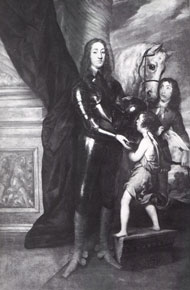
Henry Mordaunt, 2nd Earl of Peterborough was an English soldier, peer and courtier.
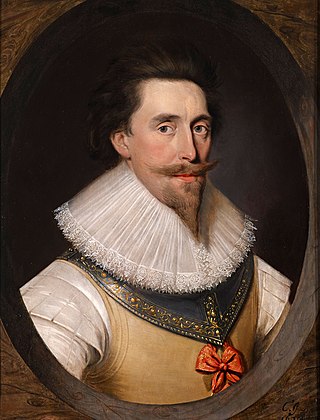
Francis Fane, 1st Earl of Westmorland, of Mereworth in Kent and of Apethorpe in Northamptonshire was an English landowner and politician who sat in the House of Commons between 1601 and 1624 and then was raised to the Peerage as Earl of Westmorland.
William Howard, 3rd Baron Howard of Effingham was an English nobleman, the eldest son of Charles Howard, 1st Earl of Nottingham and Catherine Carey, Lady of the chamber to Queen Elizabeth who died 25 Feb 1603 at Arundel House, Strand, Middlesex, ENG.
Edward Howard, 1st Baron Howard of Escrick was an English nobleman and Parliamentarian.
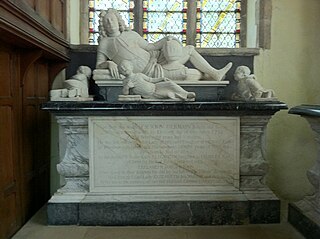
Sir John Germain, 1st Baronet was a British soldier of Dutch origin and politician who sat in the House of Commons between 1713 and 1718.

Lady Elizabeth "Betty" Germain was a wealthy English aristocrat and courtier, a philanthropist and collector of antiquities, who corresponded with literary and political figures.
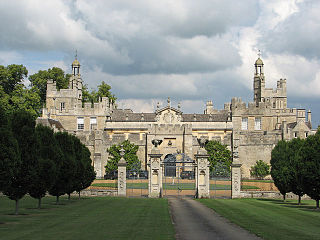
Drayton House is a Grade I listed country house of many periods 1 mile (1.6 km) south-west of the village of Lowick, Northamptonshire, England.
Hon. Sir Edward Herbert of Powis Castle was an English politician and landowner. His aunt, Katherine Parr, was the sixth, and final, wife of King Henry VIII.
Henry Mordaunt, 4th Baron Mordaunt (1568-1610) was an English landowner involved in the Gunpowder Plot.











